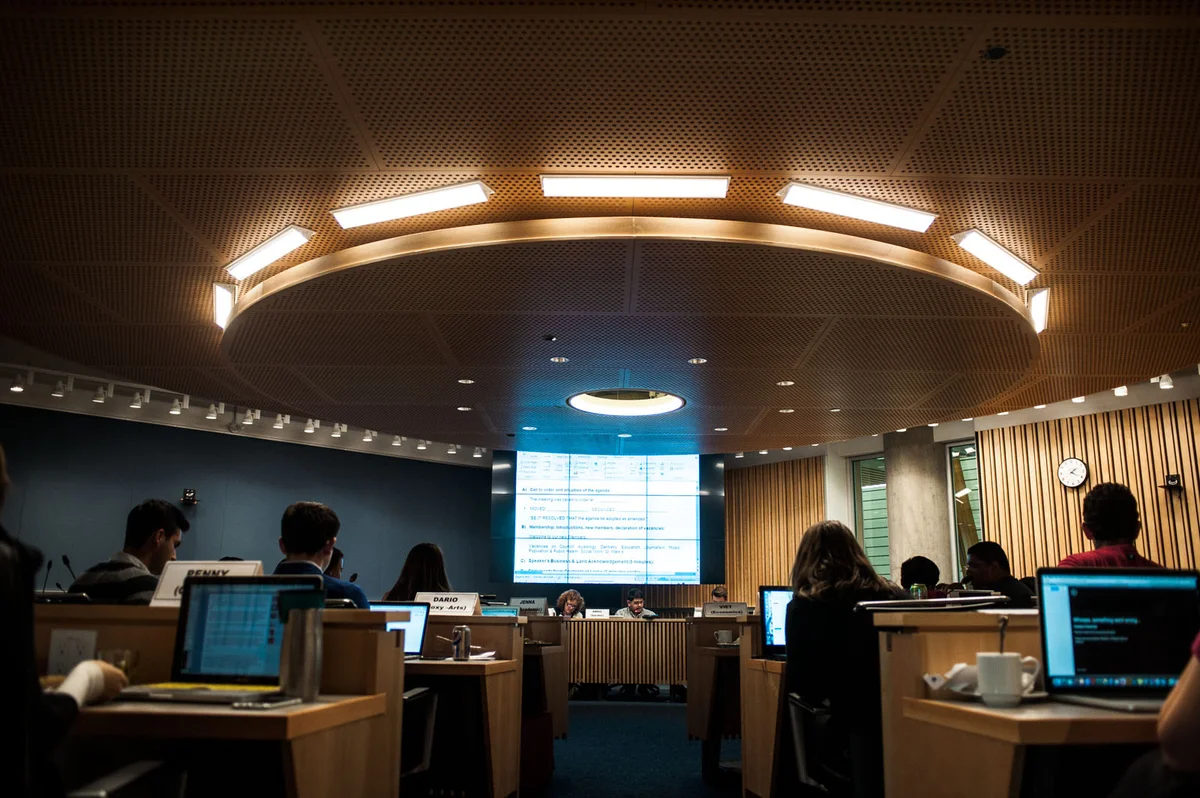
The AMS Council makes some hugely important decisions that affect the lives of all students at UBC. But what does this actually mean? What do they do?
Council is an elected body. It is composed of the AMS Executive team — the speaker house of the house, President, the VP External Affairs, the VP Academic and University Affairs, the VP Finance and the VP Administration — and elected members from all “constituent societies.” An elected member from a society could be, for example, a student from the Arts Undergraduate Society, representing the faculty of arts. As for how students become members on Council, the executives are elected every April and the other societies have their own schedules that slightly vary in terms of election.
During the school year, Council as a whole meets every two weeks to “set policy, determine budget, and review proposed changes and additions to the AMS,” according to their website. In simpler terms, they make decisions on matters like the Old SUB, funding allocations and huge school events like Block Party. Their meetings are open to all students — with free food — and start at 6 p.m. every other Wednesday, with no distinct end time. Sometimes they can go into the night.
The meetings are almost entirely open, but do sometimes go “in-camera,” which essentially means closed session. At this point, all non-Council members must leave. Sometimes they go back into open session after an in-camera period — it depends on the agenda.
Meetings can be quite formal — a speaker runs the meeting and they strictly follow the predetermined agenda. While a student attending can’t vote in matters or participate in the debate, they can observe and learn about the current matters surrounding their student council team.
Besides these general meetings, Council is also separated into many committees. Committees are in place to work on distinctive issues in order to come to effective conclusions more quickly and with more attention than they would be able to if they did all of the committees’ work during the general Council meeting.
There are four standing Council committees, ten extraordinary committees and additional ad-hoc committees that are created when necessary. An example of a committee is the standing committee called the University and External Relations Committee (commonly referred to as UNECORN), which “helps develop policies on external and university issues,” according to the AMS website.
Each committee is made up of two executives, six Council members, and three “students at large,” which are ordinary students who are elected at the beginning of the year or when a spot becomes available.
While attending Council can be boring, the issues presented are important to know since they can affect students so much. The Ubyssey live tweets every meeting through the @UbysseyNews twitter.

